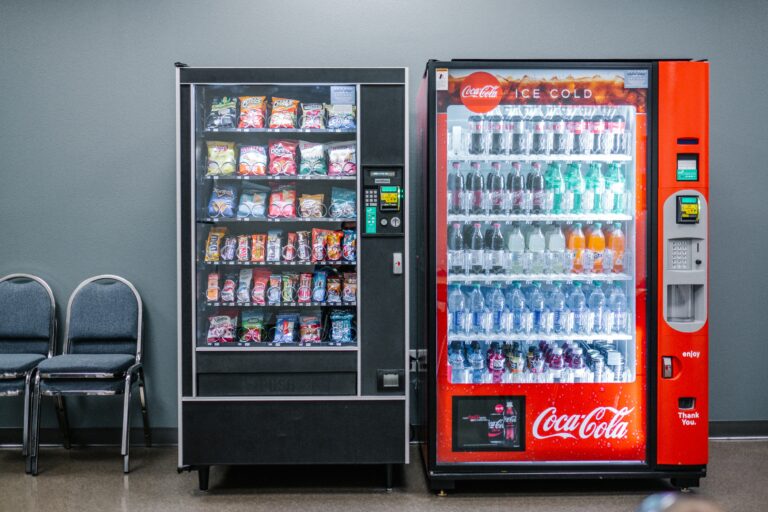The second triangle: the Descending Triangle
Read MoreFundamental: Discounted Cash Flow (Part 1)
The first component — Future & Present Value

This article will touch on how to calculate future and present values. Before this — like waaaaaaay before this, perhaps around June, we’ve spoken about the financial ratios that you’ll need to know before making an investment decision. To recap, this is a long series of articles providing you with the knowledge that you’ll need to have when considering an investment through the fundamental analysis method.
A quick recap, in order for you to evaluate whether a stock is a long-term buy, you can follow the three steps below.

The first step, is to look at the business overview to get a first glance at how the business is doing on the surface. If they pass the test, move to the next step, which is applying financial ratio analysis on these stocks to see if it coincides with the good face value you’ve analyzed before. If this step is passed, move on to the last step which is to look at Discounted Cash Flow (DCF) to see if the price that you’ll buy it at is worth it or not.
We are at the last step. However, mind you that there are a few core concepts that we’ll need to master before we can actually jump into the DCF evaluation. In this article, we will learn the first concept which is the future and present values.
What is it about?
We’ll cut to the chase. When you invest you want your money to grow, right? Now, for simple investors, growth in itself is never an issue, you can just put your money in a savings account and see it grow, or get some bonds and see the interest growing your cash up. The issue concerning good investors is never about growing, but by how much?
If you have to spend nights and days researching what stocks to invest in, and you end up having your money grow by 4% over the year, might as well put it in a savings account. Some savings accounts can give you up to 6–7% in the US. Why waste your time studying stocks, right?
The issue of future and present cash flow is quite like that.
Here’s a situation

To make understanding easy for you, we’ll give you a situation to help you understand it easier.
- You have some money you’d like to see growing.
- You are considering doing the vending machine business, where you just pay someone to install a vending machine somewhere, they’ll do everything for you, and all that you have to do is collect your cash.
- Assume: Every year, you’ll make $10,000 from the machine. Everything else factored in.
- Assume: The machine can only last for 10 years before it no longer works and repairing would cost just like buying a new machine.
- The issue is: How much should the machine cost for it to be worth it?
To know this, you can look into two main concepts, future value, and present value.
Future Value
Future value tells you how much the money now will be worth in the future, having factored in opportunity cost. What is an opportunity cost? We’ll get to that.
Here’s the formula for future value:
Future Value = Amount * (1 + opportunity cost rate) ^ Number of years
Opportunity cost here refers to the opportunity that you let go of to invest in whatever it is that you’re investing in. We’ll simplify:
- You have $10,000.
- You can invest in something that is (almost) risk-free, like the US Treasury Bills (T-Bills), or you can invest in something else.
- When you invest in something else, you throw away the opportunity to gain a secure income for a chance to make more than that.
- Usually, analysts in the US will use T-Bills’ 10-year yield rate as the ‘risk-free’ rate.
- In this example, we’ll use 4.21% as the risk-free rate.
- IMPORTANT: In real life, discount rate would usually be higher than this. If the risk-free rate is 4.21%, for example, the discount rate would usually be around double that – maybe around 8% or more. This is considering that there are many other better investments than the safest ones.
Present Value
The formula is as follows:
Future Value = Amount / (1 + discount rate) ^ Number of years
The present value tells you how much the money that you get in the future will be worth now, having considered the ‘discount rate’. Now, what the heck is that? A discount rate is just like opportunity cost, where they take in the risk-free rate, and discount it into the calculation to see how much the future price is actually worth now.
Simply, it’s like, what is the next best thing that you could invest in, if you hadn’t invested in this vending machine? The opportunity cost that we use in Future Value is 4.21%, right? Then the same will go for the discount rate, 4.21%. Why? Because it’s two sides of the same coin. You let go of risk-free opportunities when you invest.
IMPORTANT: Discount rate would usually be higher than this. If the risk-free rate is 4.21%, for example, the discount rate would usually be around double that – maybe around 8% or more. This is considering that there are many other better investments than the safest ones. We just use 4.21% for this article, however.
The amount that you let go will be discounted from the total money that you have in the future — it’s like saying “Bro, this is how much you could’ve gotten if you invest in risk-free T-Bills”. Consider it like a race, your investment growth vs the risk-free growth. You don’t want to get beaten by some people who only play it safe.
Back to vending machine example.
Now, the vending machine will give you $10,000 a year for 10 years. This is what it would look like.
By the end of the machine’s lifetime, you’ll get $100,000 — roughly. To see the actual amount that you get in terms of investment, we can use the…? Take a guess.
The present value!
This is how the calculation would go:
Present Value = Amount / (1 + discount rate) ^ Number of years
Present Value = 10,000 / (1 + 4.21%) ^ (which year is it)
For example, to see how much the $10,000 in the fifth year is worth now, this is how the calculation would be:
Present Value = 10,000 / (1 + 4.21%) ^ 5
How to calculate the price that is worth the buy?
Using our vending machine example. What you must do, is calculate the Net Present Value, which is simply by calculating all the present value for each year and summing it up. Using Microsoft Excel would help a lot.
This is what we get, the sum of all present values (which is the net present value) is $80,267.64.
What does it mean?
If you want to see if the vending machine is worth it, it should cost less than $80,267.64 for you to have it. Else, might as well just invest in T-Bills.
Bottom line
The same goes for stock investment. Sometimes you’ve calculated and projected how much a stock can grow and all, you’ve read their financial statements back-to-back, and you know that they will grow. Better, you know how much they will grow, maybe 30% in 2 years. The question is — is it worth the price it is at now? To know that DCF is the method to use. To master DCF, you will need to understand the present and future value concepts that we just explained above. That’s it for now, I guess, uh… kachoww!
No?
Okay.
The key takeaways/market update is a series by AxeHedge, which serves as an initiative to bring compact and informative In/Visible Talks recaps/takeaways on leading brands and investment events happening around the globe.
Do keep an eye out for our posts by subscribing to our channel and social media.
None of the material above or on our website is to be construed as a solicitation, recommendation or offer to buy or sell any security, financial product or instrument. Investors should carefully consider if the security and/or product is suitable for them in view of their entire investment portfolio. All investing involves risks, including the possible loss of money invested, and past performance does not guarantee future performance.
Trading Dow Pattern the Triangle Pattern (Part 1)
The first triangle: the Ascending Triangle
Read MoreFunds: Equity Funds (Part 3)
How to choose between equity funds based on companies’ earnings...
Read More



